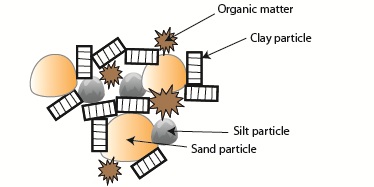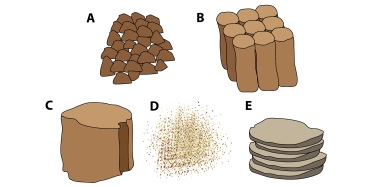Soil structure
Soil structure refers to the way soil particles group together to form aggregates (or peds). These aggregates vary in size and shape from small crumbs through to large blocks.

Some soils resemble a large, solid, featureless mass—referred to as massive—and have little or no structure. For example, very sandy soils have no structure because sand grains do not cling together.
Good soils fit in between the two extremes. A well-structured soil breaks up easily into peds with a definite shape (such as granular or blocky) and size (1–60mm).
Good structure is important, as it allows water to soak into the soil and excess water to drain away. It also allows air movement through the soil. Soil, air and water are vital for healthy plant growth and nutrient supply.

Soil peds
Peds are made up of mineral particles (clay, silt, sand) and organic matter. Peds are held together by the electrical charges on the surfaces of the minerals and organic matter.
Although clay particles are small, they have large surface areas. For example the surface on the clay in a teaspoon of black cracking clay soil is equal to the surface area of a tennis court.
Such clays and soils with a lot of organic matter are more likely to form strong peds. Sandy soils or soils with little organic matter often have little or no ped development.
Peds are described by their shape—for example: blocky, columnar, massive, single grain or platy.


